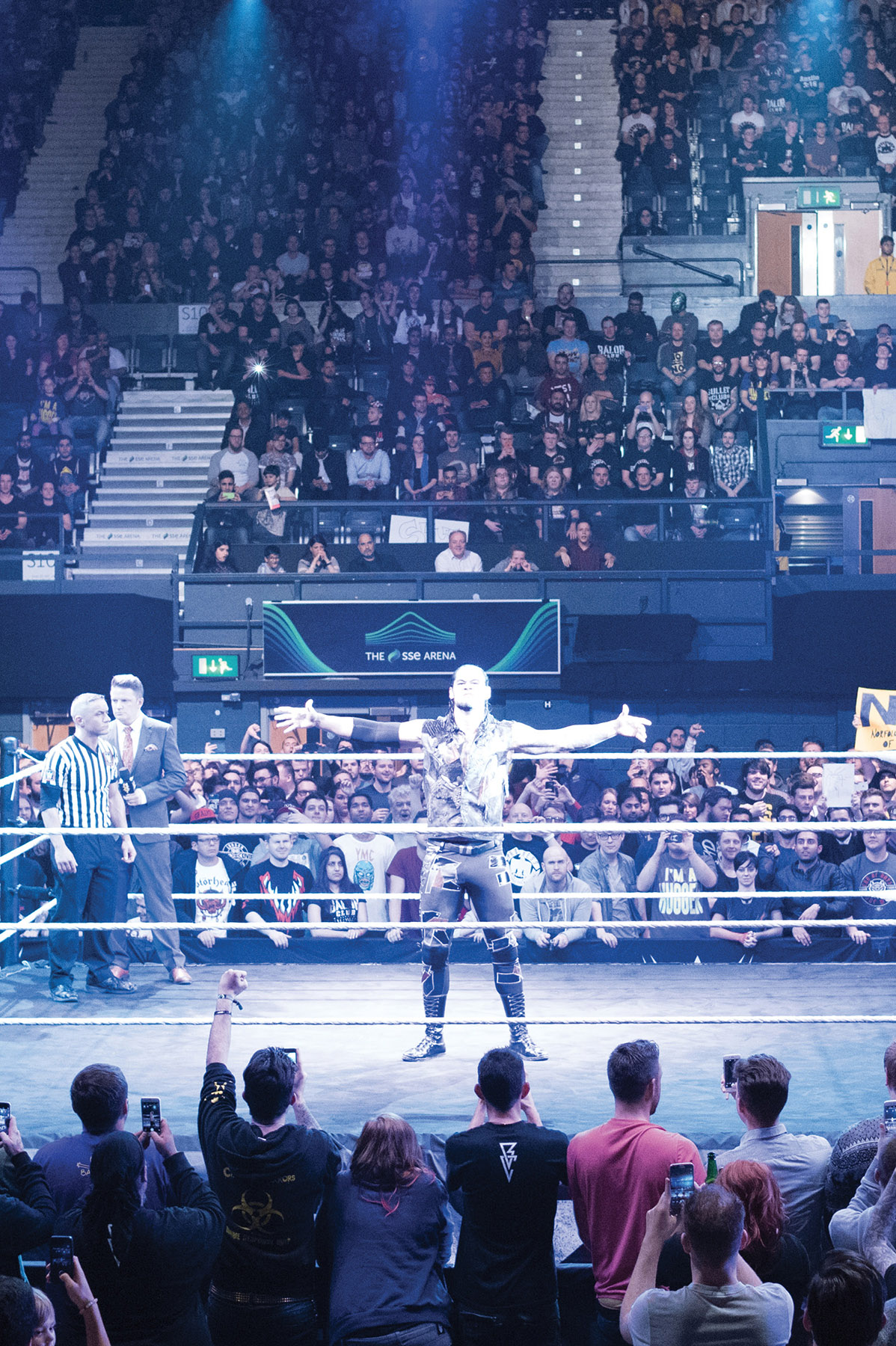CHAPTER 12
Less Talk, More Action
When discussing NXT’s success, everyone from Levesque to the talent themselves talk about one thing: WWE Network. But it’s not simply airing on the Network that has keyed NXT’s meteoric rise, it’s the type of show they’re promoting, from the conflicts inside the ring to even the amount of time they’re on air. One taped hour per week, with four specials a year. No overexposure. No time for long-winded rants in the ring. Just down and dirty action that plays out more like ECW or Ring of Honor than Raw.
“I feel like what NXT brings is something completely opposite of what you see on Raw and SmackDown Live,” says Sasha Banks. “It’s like this underground layer of WWE that no one should know about but everybody wants to know about. We have talent from all over the world and I think that’s what makes it really special. Not one person here is the same. Everyone comes from a different background, everyone has a different story, everyone’s here for a different reason, but for the same reason too—to be the best and to have incredible matches. I’m a fan of NXT. I love watching it. My favorite men are Tyler Breeze and Sami Zayn. The matches they bring to the table are incredible. It’s something you don’t see on Raw or SmackDown Live. We have this excitement; we have this buzz about us. Everyone wants to know what NXT is, and you really have to be here to see it and to feel it—people love it. We’re really taking over the world.”
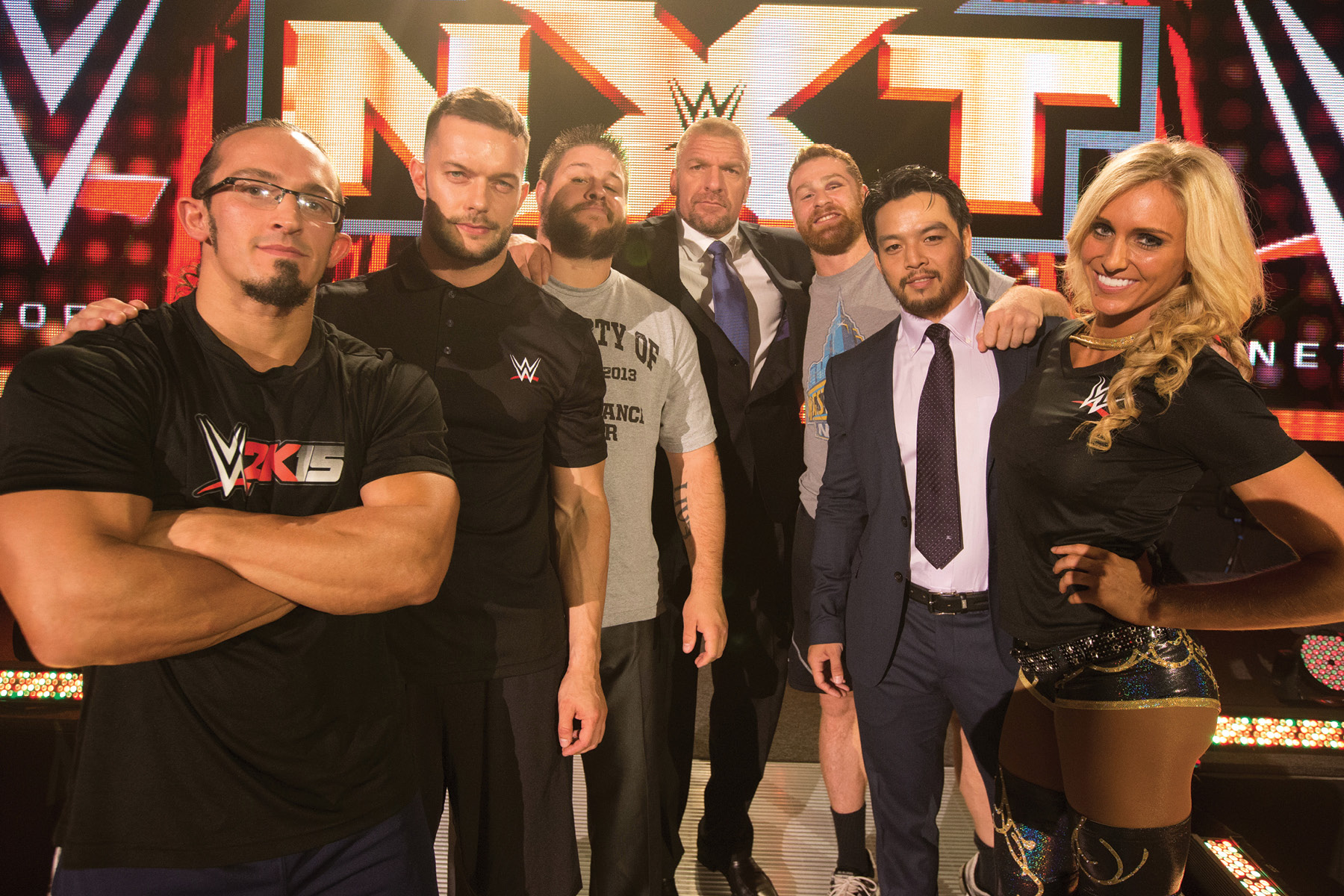
“You’re seeing the influx of guys on Raw and SmackDown Live who are coming from NXT and who were originally in the independents, and you’re seeing the wrestling style on TV change due to them,” adds Cesaro. “When you see new performers who have a different style . . . that’s the beauty of this art. Everyone is unique. I think there is also a one-upmanship on the main roster and down in NXT. If one of the people I hang out with has a great match, I want to have a better one. If I have a good match, they want to have a better one than me. There are a lot of eyes on NXT, and that can be a positive, but that can also be a negative. When you’re brand new, it’s not good to be in the spotlight right away, because you’re not ready for it, but with NXT, it’s sink or swim.”
Paul Levesque agrees that the non-stop action and unique styles are key, but he also knows that part of NXT’s early success is being “the new kid in town.”
“A year from now we are not going to be the shiny new penny,” he says. “We’ll have been here awhile and we’ll be established. It’s great to drive a new car, it’s awesome. How much do you love that car when you’re still driving it around a year from now and you’ve been driving it around every day? You have to keep them excited, you have to keep them engaged and you have to keep it fresh. That’s the challenge. What makes the WWE Universe spread the word and what makes them want to come back? To me, it’s just giving them great storylines. It’s no different than what works for WWE or for the main roster or for Raw and SmackDown Live or anything else. In this case, the stories can be more concise because we’re kind of going after a particular group. We want good stories, good rivalries, great delivery of matches, and to create an exciting environment where even predictable is unpredictable. And I think that is the trick of what we do because not letting it be predictable is the real challenge. Kevin Owens is on the main roster, Sasha Banks is on the main roster—so is what they’re doing on NXT now predictable? We’ll make sure it’s not predictable.

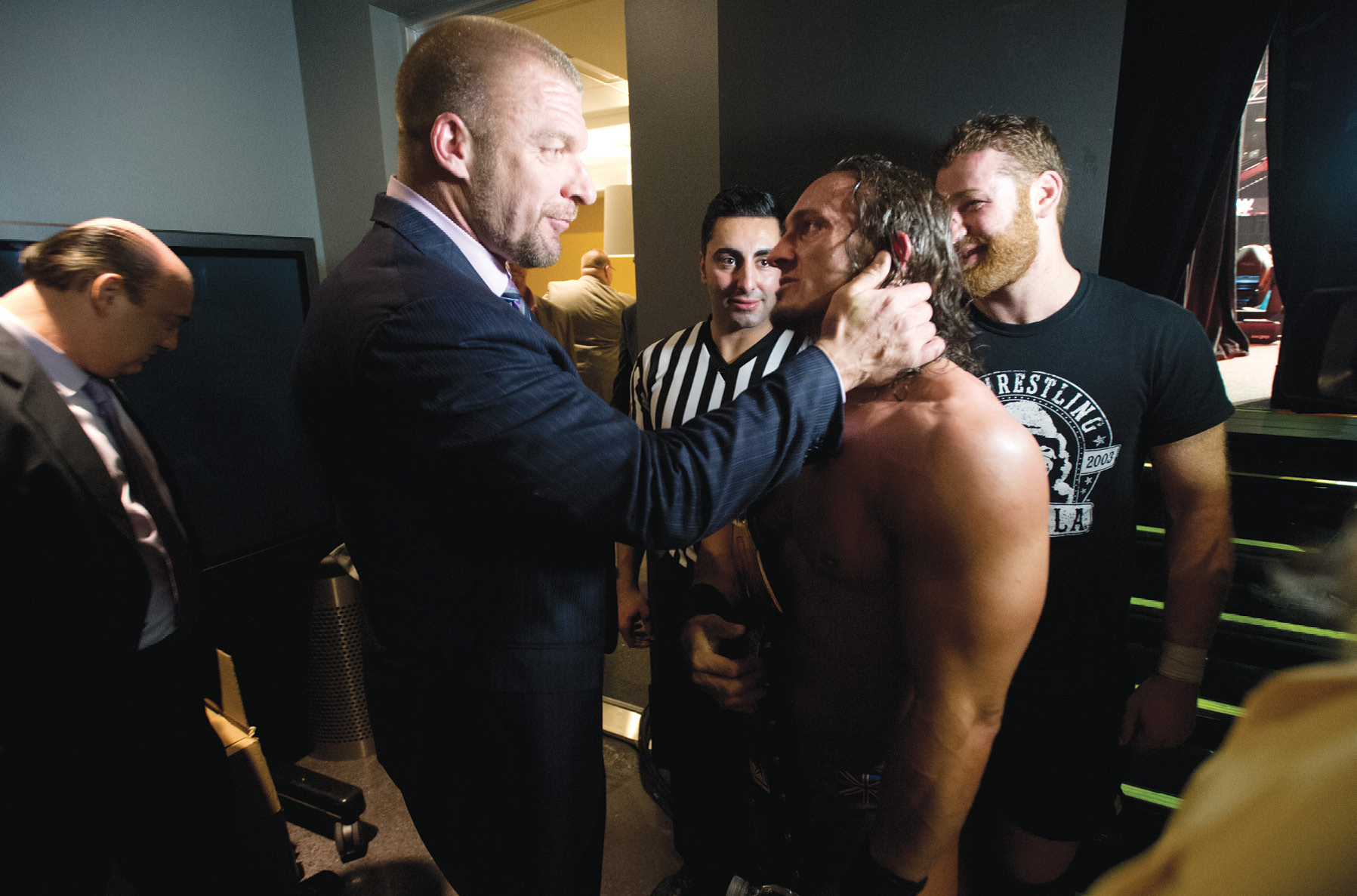
Triple H gives Neville some post-match encouragement.
“We want to engage the WWE Universe in something they think is awesome no matter what, whether it’s an individual talent, whether it’s the overall product, or whether it’s just a feeling they get when they watch. It makes you want to talk about it. With NXT, one of the other important things is that it’s a one-hour weekly show. It’s a two-hour live event special. It’s quick and it’s fast and we don’t take our foot off the pedal. We step on the gas, we go straight through two hours, and you’re wiped out when you’re done watching. You’re like, ‘Oh my God, that was amazing.’ There was never a let up, there was never a dull point, there was never anything that sort of slowed down and made you think, ‘Okay, I can sit down now before the main event comes on.’ There’s a charm to that. It’s different, so it feels cool. We just want to make people excited, and if we can make them excited enough to go and tell their friends about it, even better.”
Part of that is taking the creative in unique and different directions, but with a development brand and working with development talent, Levesque says that you actually can’t plan too far in advance—he doesn’t know when someone will get called up until he gets the fateful message from Stamford. So while Levesque and the creative team like to plan out a few months in advance where characters might be headed, a lot can change between the time something gets put on paper and when someone is actually headed to the ring for a taped show.
“I remember when Kevin Owens got called up, I was like, ‘Fuck! He’s in the middle of a rivalry with Finn!’ But you just have to roll with it,” says Levesque. “It’s just one of the challenges of putting on a TV show.”
Another important challenge of teaching performers in development: how to perform moves for the camera.
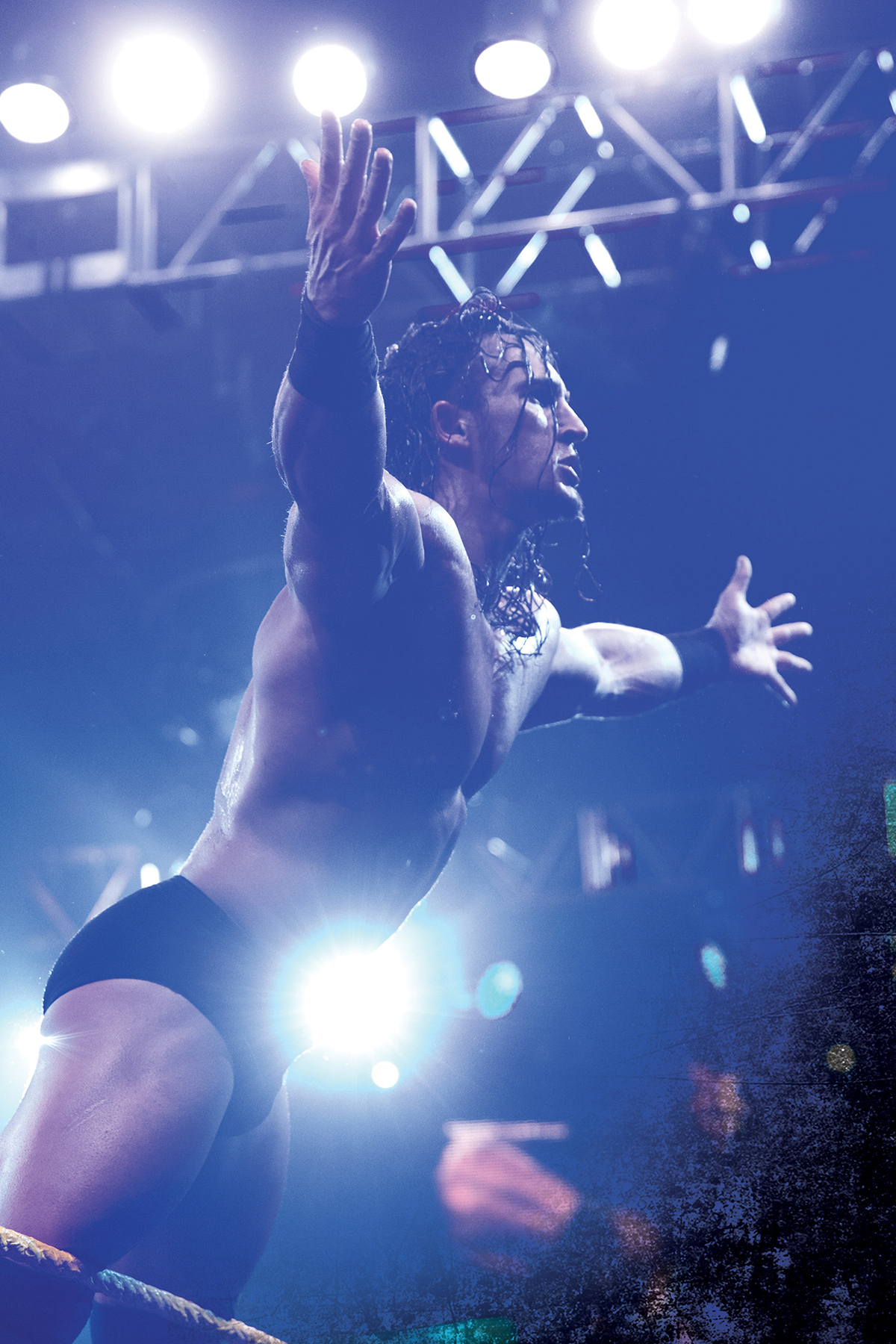
“WWE matches are televised, so being taught the camera angles is as important as learning to take bumps and the different techniques you perform in the ring,” says Neville. “It’s all a part of what we do, and the way they teach it in NXT just gives you such an advantage for when you appear on Raw. You already know how the camera is going to capture your moves, you already know how to walk down the ramp because everything you do in NXT is repeated on Raw, just in front of more people.”
Neville also credits the NXT creative team with developing some of the best characters in the industry.
“NXT is huge in helping establish your character,” he says. “The environment in the Performance Center is very positive, and the creativity in the building is infectious. There are so many cool characters that are being created in NXT; it really is an exciting place to be.”
Apollo Crews sees his character as a work in progress, but he loves the ability to approach creative with ideas.
“If somebody has an idea, they can pitch it to creative, and if creative has an idea for you, they’ll approach you about it,” says Crews. “Maybe you can work on your ideas together and meet somewhere in the middle. A lot of it is on us. We can’t just sit around and wait for something to come to us. It’s always a good idea to be working on new ideas. It’s like working outside of work. You’re thinking of ideas and writing them down. Being able to relay those ideas to the creative team or to someone who can get it into the creative team’s hands is just so important. I think that’s where a lot of guys get stuck. They don’t work outside of work. I admit I need to work harder to come up with ideas that I can pitch so I’m always evolving, so I’m always changing, and I never get stuck standing still. I’m a go-with-the-flow guy. I don’t want to know too far in advance because so many things can change in that time that can alter what’s going on, so you have to be able to adapt to any situation. Even when you’re going out to the ring and you’re in that moment, something can change and you need to be able to adapt.”
Finn Bálor actually holds the opposite position; leaving creative decisions to the writing team means more time for him to fine-tune his character and moves.
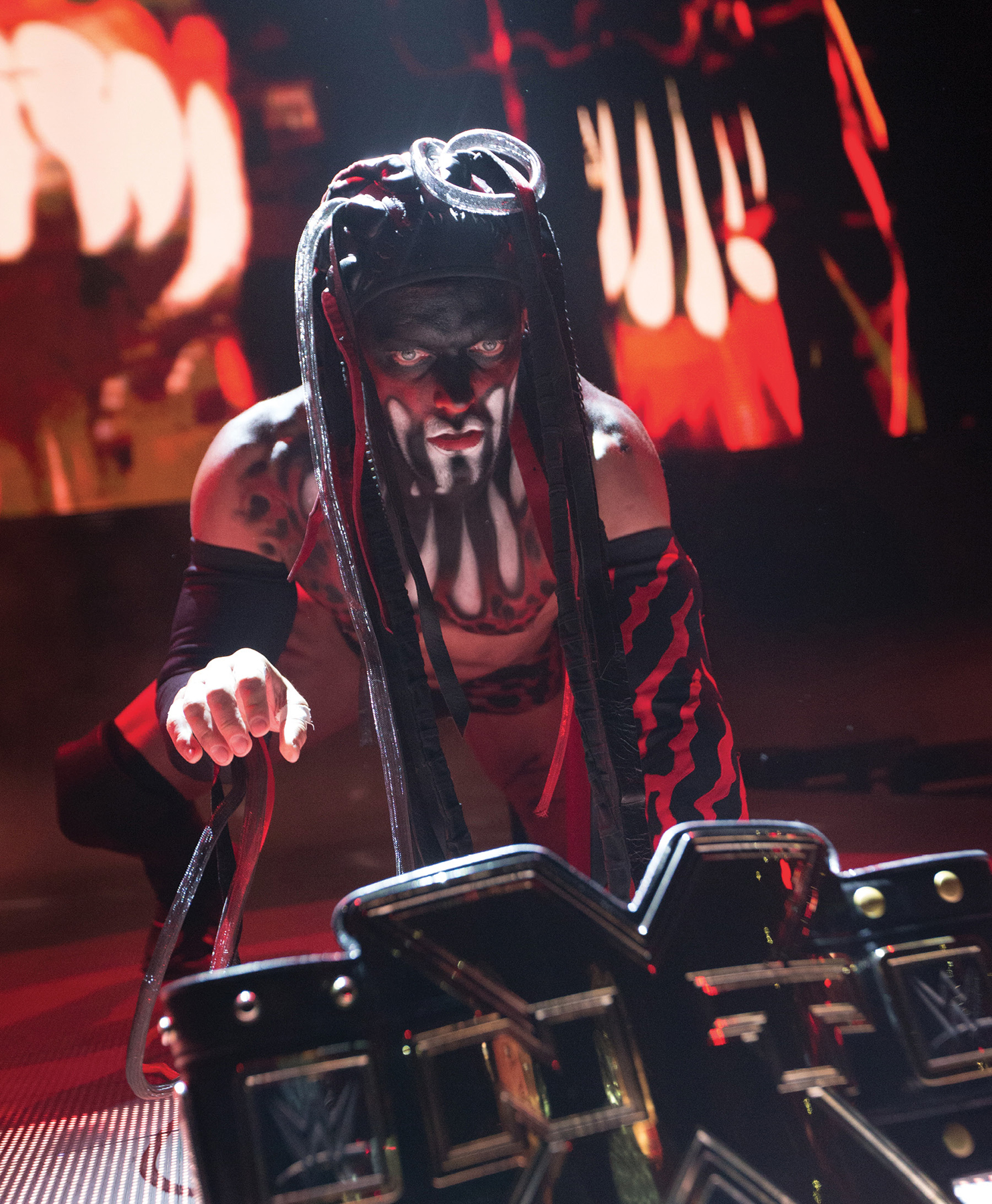
The Demon King makes his entrance as NXT Champion.
“I’m sure some people love to put in their two cents, but I just like to worry about myself,” says Bálor. “It’s not my job to take care of storylines; that’s somebody else’s job. I’m just going to show up to work and make the most out of whatever they want me to do. Any type of storyline I would come up with would be from only my perspective, and I’m sure the writing team and the creative team assess their stories from all points of view. I trust them; that’s their job. My job is to take that storyline and play it out the best way that I can.”
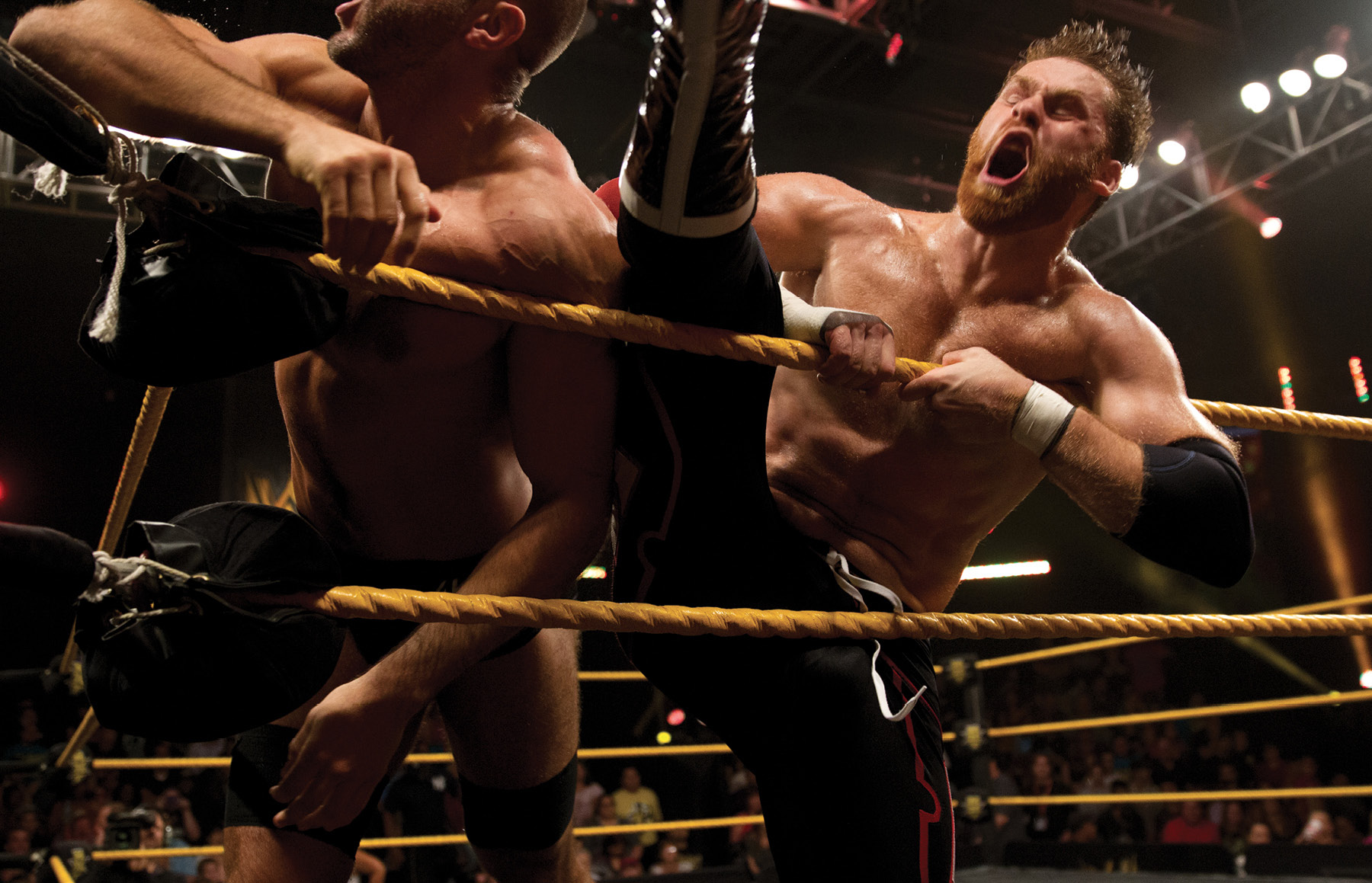
Sami Zayn’s explosive offense on display in NXT.
As for talent getting called up in the middle of rivalries, Bálor actually sees NXT as a victim of its own success. “Maybe NXT wasn’t supposed to be as successful as it is now, and maybe people getting called up in the past didn’t affect the show, but perhaps now, people getting called up will really change storylines,” he says. “As far as I’m concerned, the way NXT is going right now, I don’t see the call-up as the only way to define success. NXT has its finger on the pulse of what’s cool right now. It’s all anyone is talking about, and I want to be a part of it. I don’t want to be the person who gets called up and then misses out on this incredible time in the business. I believe NXT is going to revolutionize the business—not only what goes on inside the ring, but how it’s consumed. It’s only on the network, it’s not on TV, so it’s a very different time, and what we’re doing is something fresh and unique. I think when you look back at this time 10 years from now, you’re going to see a huge point in the history of this industry. This is a time that’s going to change the future of the business.
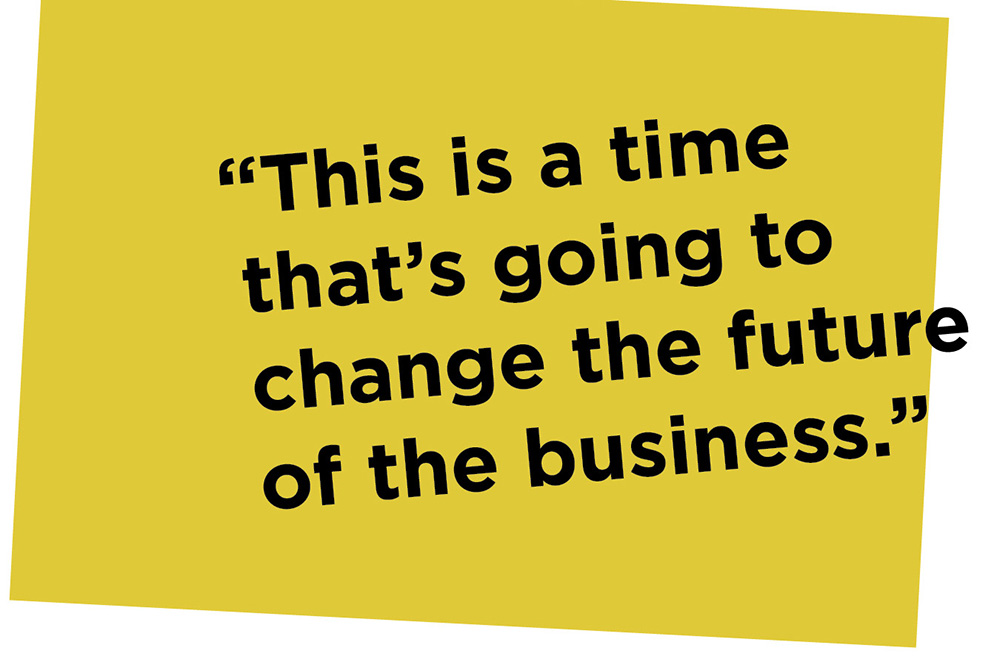
“I think it’s a perfect storm that makes it great TV. It’s quality in-ring product. Adrian Neville, Sami Zayn, and Cesaro led the way before us, and then the so-called indie darlings like myself and Kevin Owens joined, and we brought a lot of eyes to the product, and so do the fresh faces who are coming through the Performance Center, like Jason Jordan and Chad Gable, Dash and Dawson, Enzo and Big Cass. So you’ve got recognizable names who have been around a long time, you’ve got fresh talent coming in, you have the best storylines, the best lighting, the best camera angles, the best entrances, and the most attention to detail. I also think a huge bonus is it’s not overexposed. It’s only an hour a week, and it leaves people wanting more, which is a huge component of its success.”
But as NXT gains viewers, don’t expect Bálor to be one of them. “You may be surprised to hear this, but I don’t go online much,” he says. “I don’t watch the product. I don’t watch WWE Network because I’d like my perspective to remain my perspective and not be influenced by a third party. I’m experiencing NXT through my point of view and that’s all I need to know as a performer. I don’t need to see the other end of it because I don’t want to change anything I’m doing. The way I see it, NXT is the coolest thing in our industry right now, and that’s the only thing I need to know. That’s my opinion, and I don’t need anyone else’s. I don’t know if that makes me an egomaniac, but that’s just how I want it. I want to see NXT how I see it, and I don’t want to be swayed by other people.”
And while Bálor might not be in the ratings’ demographic, former NXT and WWE Champion Seth Rollins definitely is. Rollins loves NXT’s television model, not to mention the lack of outside influences attempting to dictate the show’s content. “NXT is just a different animal,” he says. “They don’t do live television. They do the quarterly specials that are live, but they follow the old WWE model where they essentially have four big pay-per-views per year and they tape their television. They have the ability to have a little bit of foresight in that sense, where as we do our television live every single week—the advertising on it is wild and there are all sorts of outside influences that people just don’t understand. They just think, ‘Oh, it’s a three-hour entertainment show,’ but it’s so much more than that. There are so many different cooks in the kitchen and everybody has their own spices that they want to throw into the recipe, and it doesn’t always work out. A lot of times, we just don’t have the time or the resources to make the changes, so it’s one of those things where you have to maximize your minutes. Do what you can with the time allotted. So the reason the women have gotten the short end of the stick throughout the years is because that was the formula that worked. To stray away from that is difficult. In NXT, we don’t have all of this pressure coming from outside sources. It’s very grassroots in that it’s just the fans and the performers—that’s it. It doesn’t have all that corporate mumbo jumbo behind it just yet. I say ‘just yet’ because you never know when it will reach that point. But for now, it’s still very raw and very real. It’s just a bunch of kids with a passion for what we do who have the opportunity to go out there and artistically express how they feel about a certain story, how they feel about life, how they feel about a match. The fans are also a huge part of that. The crowd at Full Sail has become their own thing. And that energy . . . they feed off the performers, the performers feed off of them, and it has created a very awesome environment that’s conducive for growth from an artistic standpoint.”
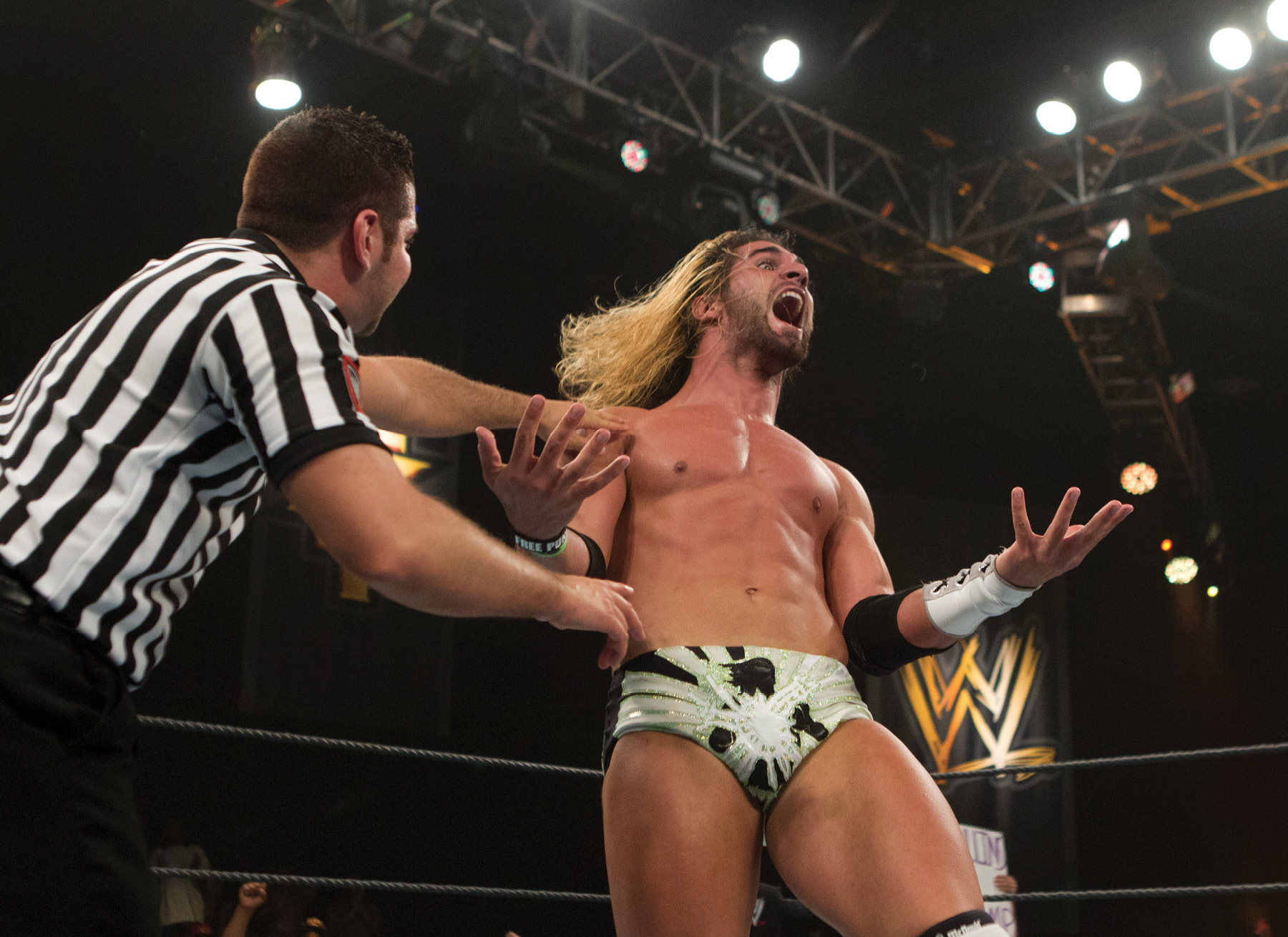
Seth Rollins celebrates his win in the NXT Championship Gold Rush Tournament.
Rollins also credits the internet for NXT’s success. “Ten years ago, the internet fan was a small demographic; but in 2015, the kids grow up with the internet. If a fan wants to know something about Sasha Banks, they just Google it and in two seconds they have all the information they would ever need: who she’s affiliated with, who she is dating, and everything else they’ve ever wanted to know. That’s not just a casual fan, that’s anybody who turns on a TV. If somebody sees me on Good Morning America or The Today Show or ESPN and they don’t know who I am, the first thing they’re going to do if they’re interested in what I’m saying is Google Seth Rollins, and they’re going to find out every single thing about me. We talk about not catering to the internet fans, but the entire WWE Universe exists on the internet. Now we’re pushing our audience toward Twitter, toward Facebook, toward social media, and we’re inviting them into that world. It’s almost like we’re peeling back the curtain another layer, similar to the way The Kliq did it way back in the 1990s. We’re entering this revolution where entertainment is being consumed on so many different levels, and we have yet to fully harness that energy we’ve created. But there’s something brewing and changing about the way people watch WWE and what they want to see from this art form. It’s very interesting, and it doesn’t surprise me at all that there were 15,000 people in New York City who went to watch NXT. They all want to be a part of that. It just looks like so much fun, so why would they not want to do the same thing. That’s just how things are shifting, and you see that more and more.”
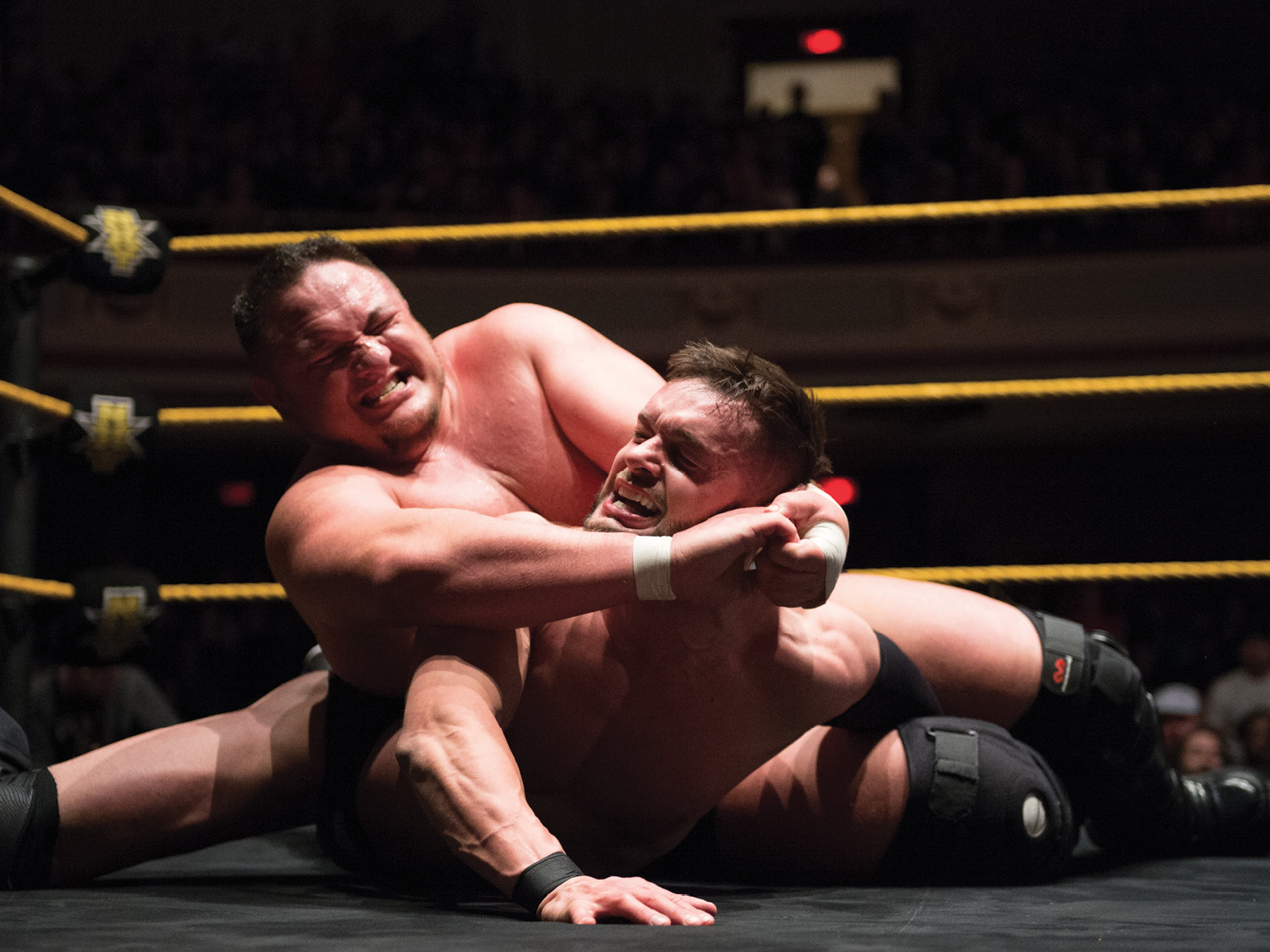
Samoa Joe and Finn Bálor continue their brutal rivalry.
The rise of the internet fan also enabled NXT to attempt something unique to the business: a Championship change at a non-televised show. On April 21, 2016, Samoa Joe defeated Finn Bálor in Lowell, Massachusetts, to win the NXT Championship. The win not only ended Bálor’s NXT-record 292-day Championship reign, but it also proved that you don’t need to change Championships at a pay-per-view special to create buzz throughout the world.
“The general idea was I would win the Championship at some point, but the decision to do it at a house show was really a conscious decision to reward our live-event crowds,” says Samoa Joe. “NXT has grown beyond the perception of just a development brand and has transformed into another brand unto itself. The biggest reason that has happened is because no matter where we go, from around the U.S. to the UK, our house shows are amazing. The energy and the vibe that the fans bring to these shows is unparalleled, so the decision was made to give these fans something that’s special, unique, and might never be replicated again. I think that was the thought process behind the decision.
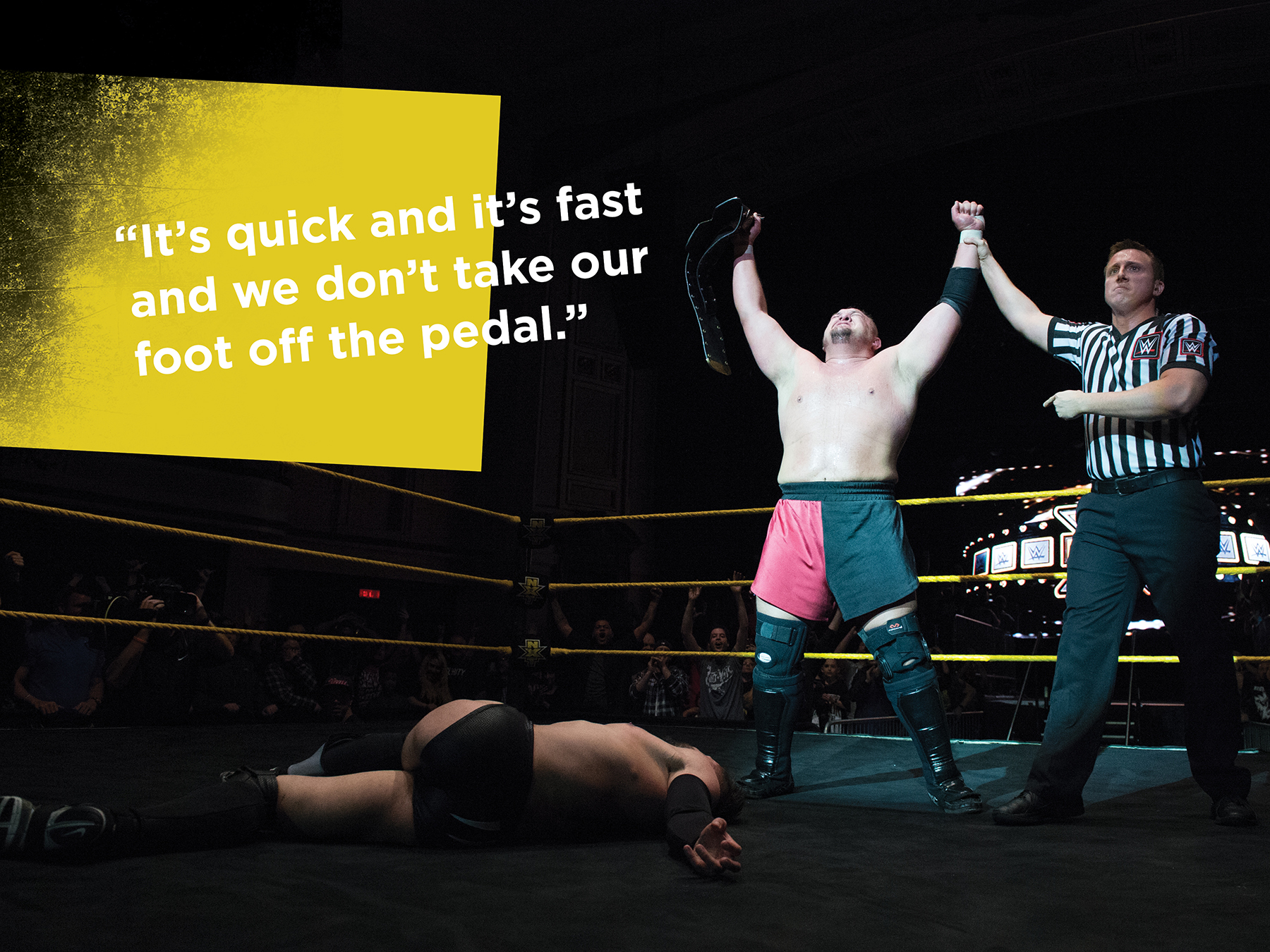
“There is a lot of trial and error in NXT. There are certain things that you don’t want to gamble on with the main roster, but you can take those chances in NXT. Winning the Championship on a house show proves just how much the landscape of entertainment has changed. When I won in Lowell, Massachusetts, people were like, ‘Oh, that’s horrible! I didn’t get to see it on TV.’ But these were the same people who read the thousands of tweets from fans who were there live, and then they retweeted it and watched the video of the match, which spread virally. In reality, it was probably seen by just as many people online, if not more, than if we did it only on TV. If you want to see what happened in the match, it’s just a click away. And that was thought about and planned. We knew that if we did this at a house show, the internet would go crazy. Videos are going to get out there. It’s like this lost footage that you’re not supposed to see, but everybody is watching, and it made the fan reactions caught on cell phone cameras that much cooler. If you did this in the ’80s or early ’90s, it wouldn’t have gotten seen until television. We did it, and it was online minutes later. It’s about having your finger on the pulse of the modern media markets, and that’s what NXT is all about. We continue to push the boundaries of entertainment.”
“With NXT, there’s a lot less talking and a lot more action,” adds Paige. “It has that independent feel. It has that ‘it’ factor. We tell good stories with less talking. It’s not like a soap opera; it’s action packed. It’s like an addiction: once you see one show, you want to carry on and keep watching.”
